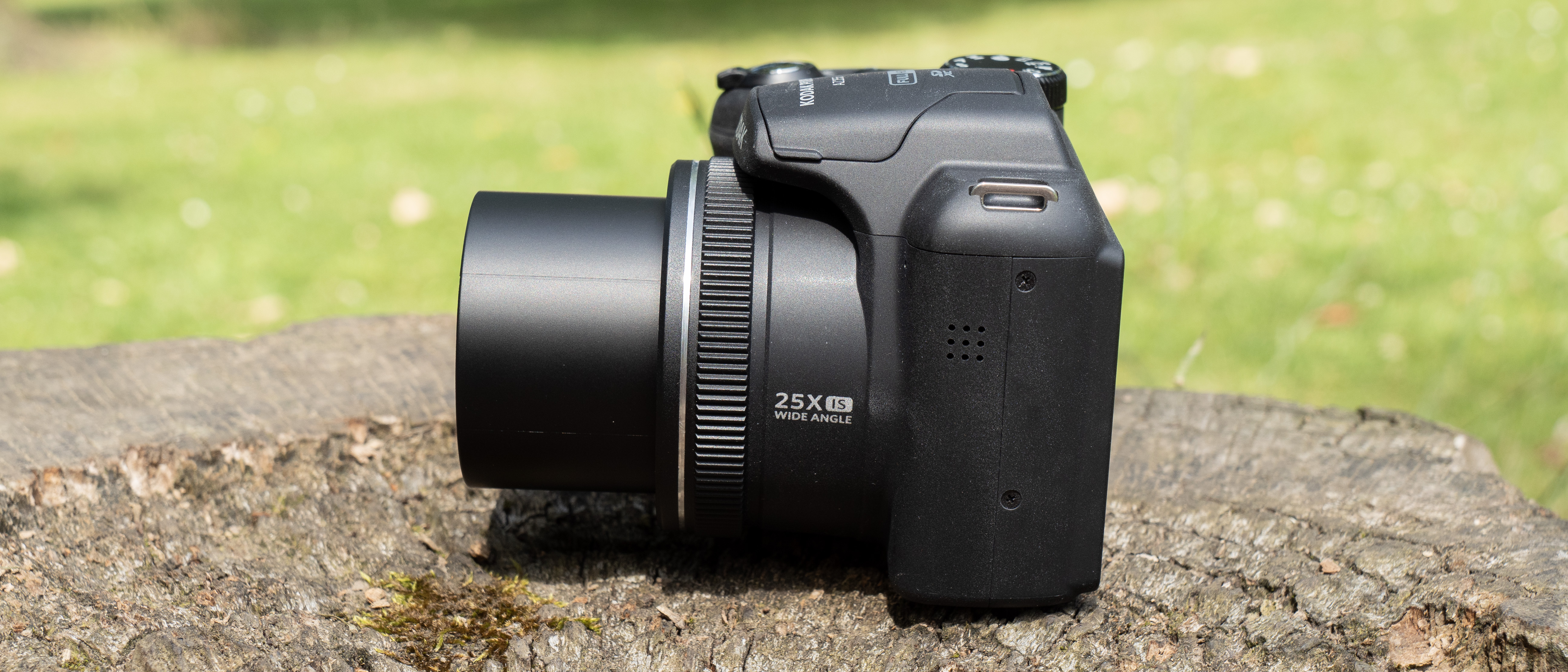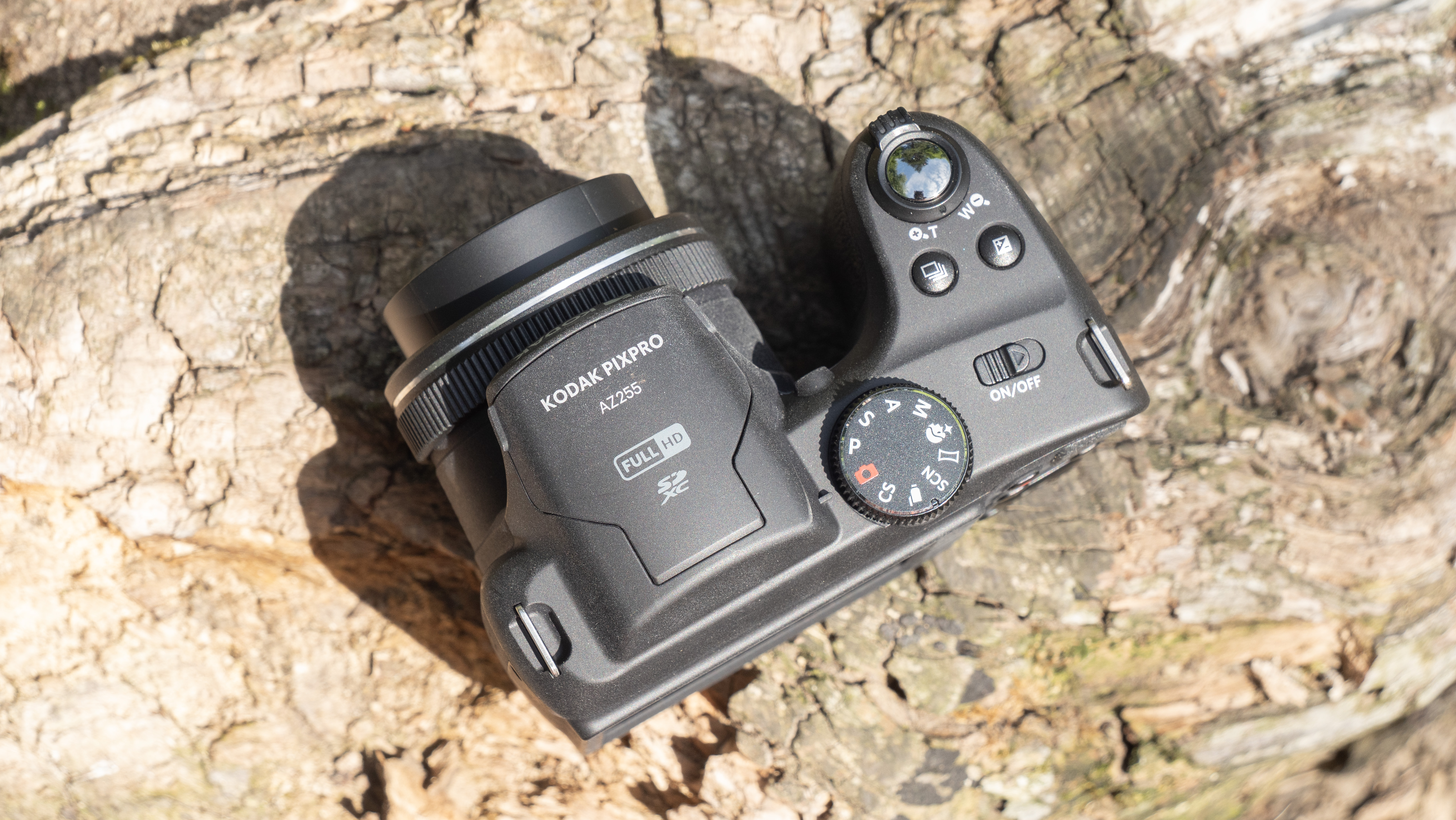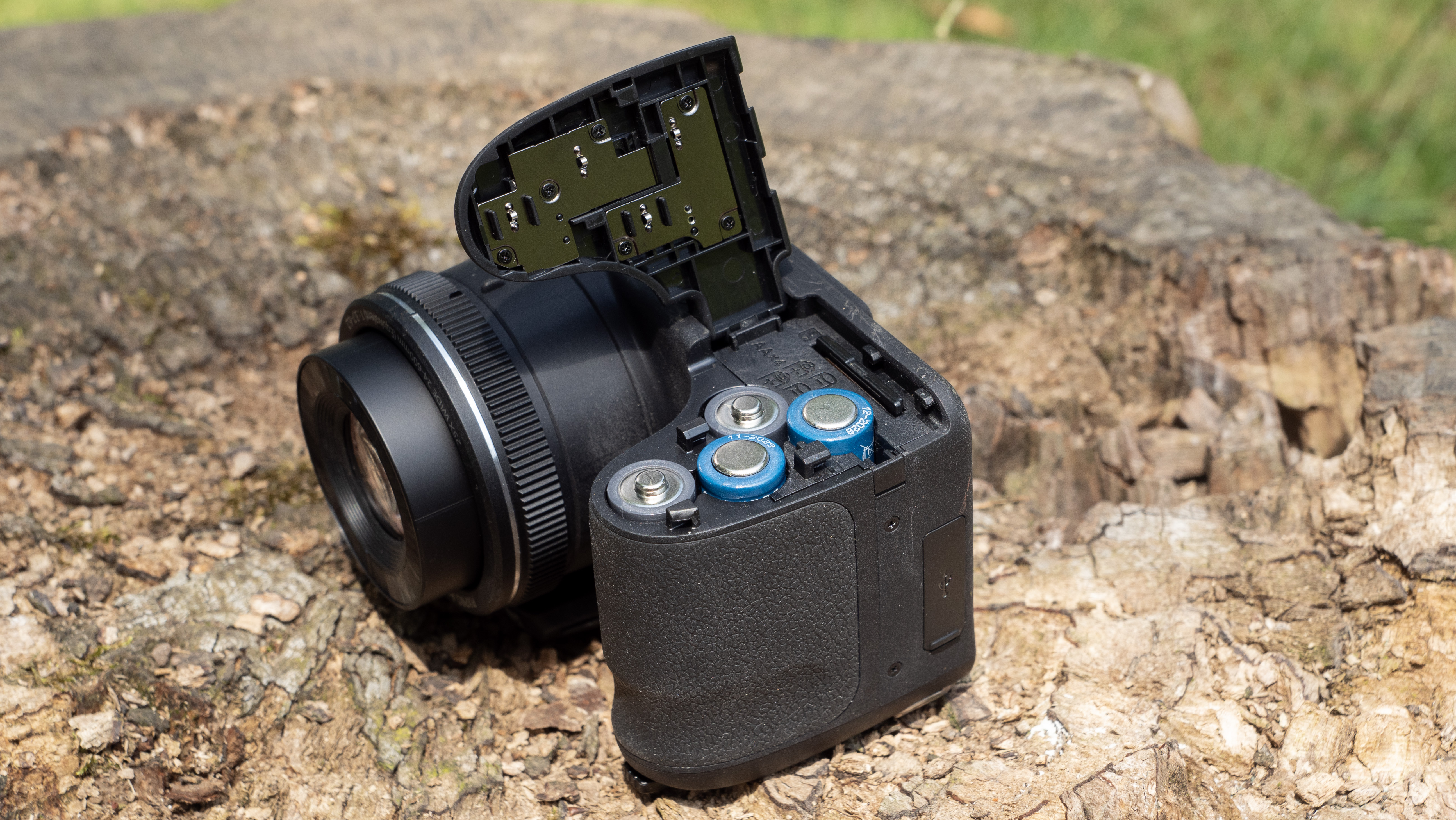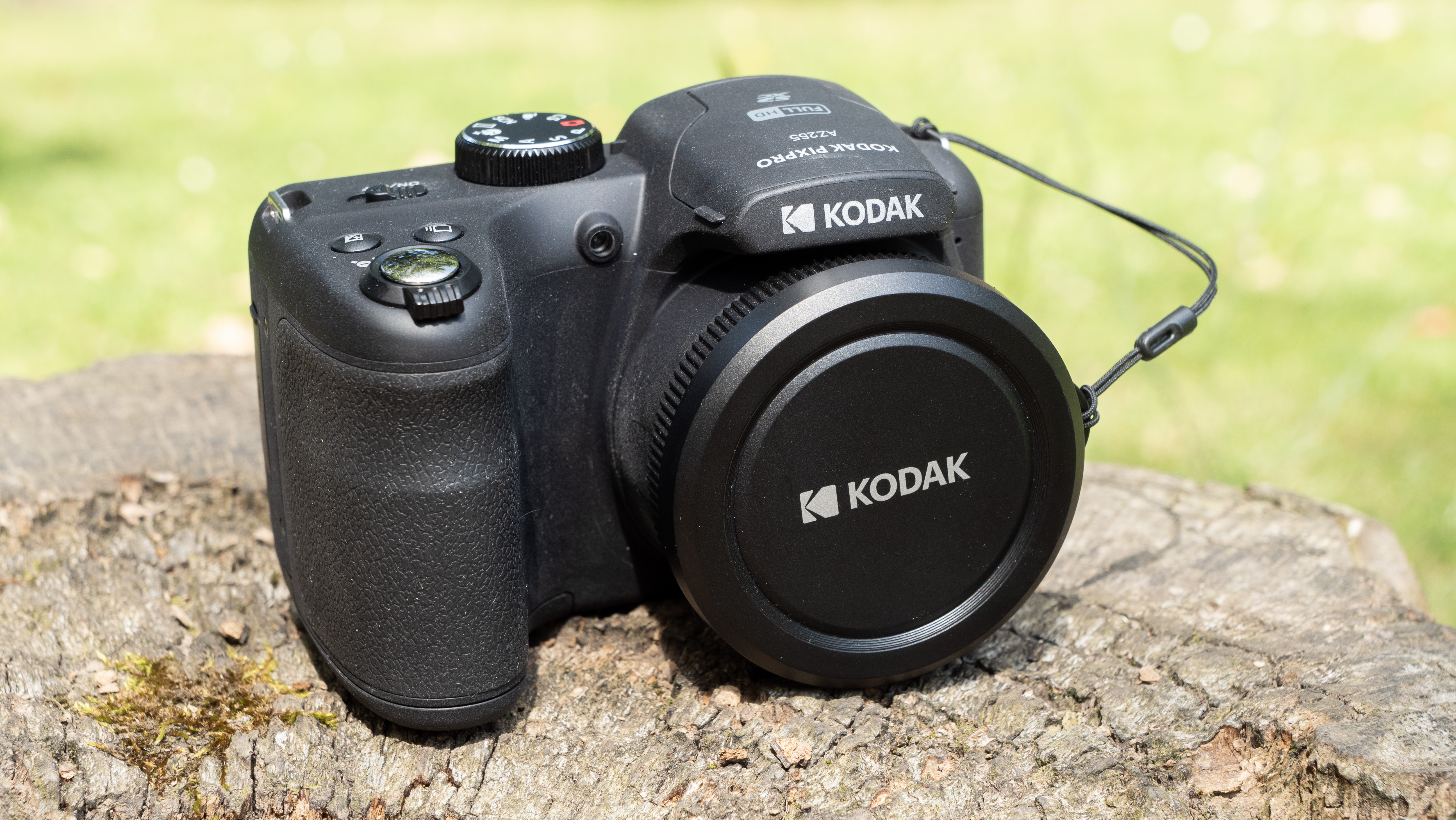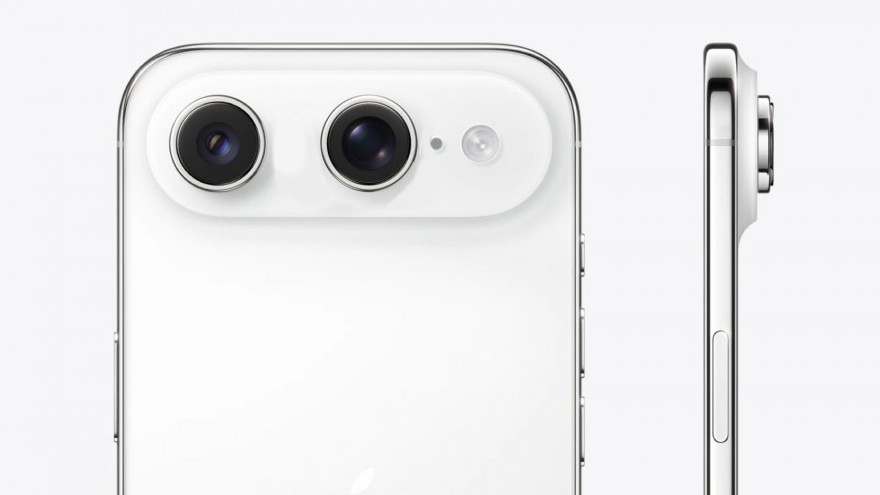Digital Camera World Verdict
With models like the Kodak PixPro AZ255, Kodak has been doing great business in the bridge camera sector for some time – but there’s probably a reason why there’s very little competition for cameras like this these days. The photographs the AZ255 takes are mediocre at best, and pretty terrible at worst. If you really want a very cheap bridge camera then it’s worth a punt, but don’t expect to fall in love.
Pros
- +
Low price
- +
Lightweight
- +
Can buy batteries anywhere
Cons
- -
No viewfinder
- -
Screen hard to see in bright light
- -
Slow operation
- -
Poor image quality
Why you can trust Digital Camera World
It’s fair to say that the best camera phones have all but killed off the compact camera in 2024, but there are still some segments of the market that are showing signs of life.
One such type is the bridge camera, which is appealing for giving you the form factor of a “real” camera, an extensive zoom, and things such as manual control via dedicated buttons and dials, too – all of which you won’t get from your smartphone.
The Kodak PixPro AZ255 has a 16MP 1/2.3-inch CMOS sensor – that’s actually smaller than some you’ll find in smartphones now – but it pairs it with a 25x optical zoom. That’ll give you an equivalent of 24-600mm in 35mm terms. The aperture ranges from f/3.7 at the wide angle to f/6.2 at the telephoto end.
It’s unlikely that a model like this would end up near the top of our list of the best bridge cameras, but one thing it has going for it is its rock-bottom price. At $179 / £179 / AU$349, you won’t find much available for cheaper of this type brand new.
Arguably therefore, this could make a good purchase for those new to photography, or who are looking for something a little bit different from their phone, but without the expense and complexity of a typical “proper” camera.
Kodak PixPro AZ255: Specifications
| Photo Resolution | 16.35MP |
| Video Resolution | Full HD |
| Image Sensor | 1/2.3-inch BSI CMOS |
| Selfie Lens | No |
| Battery Size | 4 x AA (so dependent on brand/type) |
| Connections | Micro USB |
| Display | 3-inch, 460k-pixels fixed LCD |
| Touchscreen | No |
| Size (mm) | 113.6 x 77.7 x 69.7mm |
| Weight | 336g (body only) |
Kodak PixPro AZ255: Price
You can buy the Kodak PixPro AZ255 now worldwide for $179.99 / £179.99 / $349. You may find some deals in various locations, some of which are time-limited. Shipping costs will also vary depending on location.
The camera was launched in December 2022, so it’s a couple of years old now. It remains on the cheap side for a bridge camera, with it being very difficult to find much else for under £200 brand new. Of course, you might find some similarly priced deals on second-hand gear of comparable, or even better quality.
The best camera deals, reviews, product advice, and unmissable photography news, direct to your inbox!
If you’re just starting out in photography or looking for a camera for family trips and outings, something at this price can be very tempting – but it’s worth considering whether spending a little bit more might be better value in the long run.
Kodak PixPro AZ255: Design & Handling
Perhaps one of the reasons for the continued appeal of the bridge camera is the form factor. The essence here is that the Kodak AZ255 is like a miniaturized DSLR or mirrorless camera, with a chunk grip and a traditional control layout.
Despite being reasonably small and light, the AZ255 feels quite solid in the hand, with a textured section around the grip, which is also molded to fit your middle finger snugly – with your index finger sitting atop the shutter release button.
Around that shutter release is the zoom rocker switch, which you push left or right to extend the camera’s zoom. If you keep on pushing it once you’ve reached the full 25x of the lens, you will enter digital zoom. The amount you’ve zoomed is displayed on the screen.
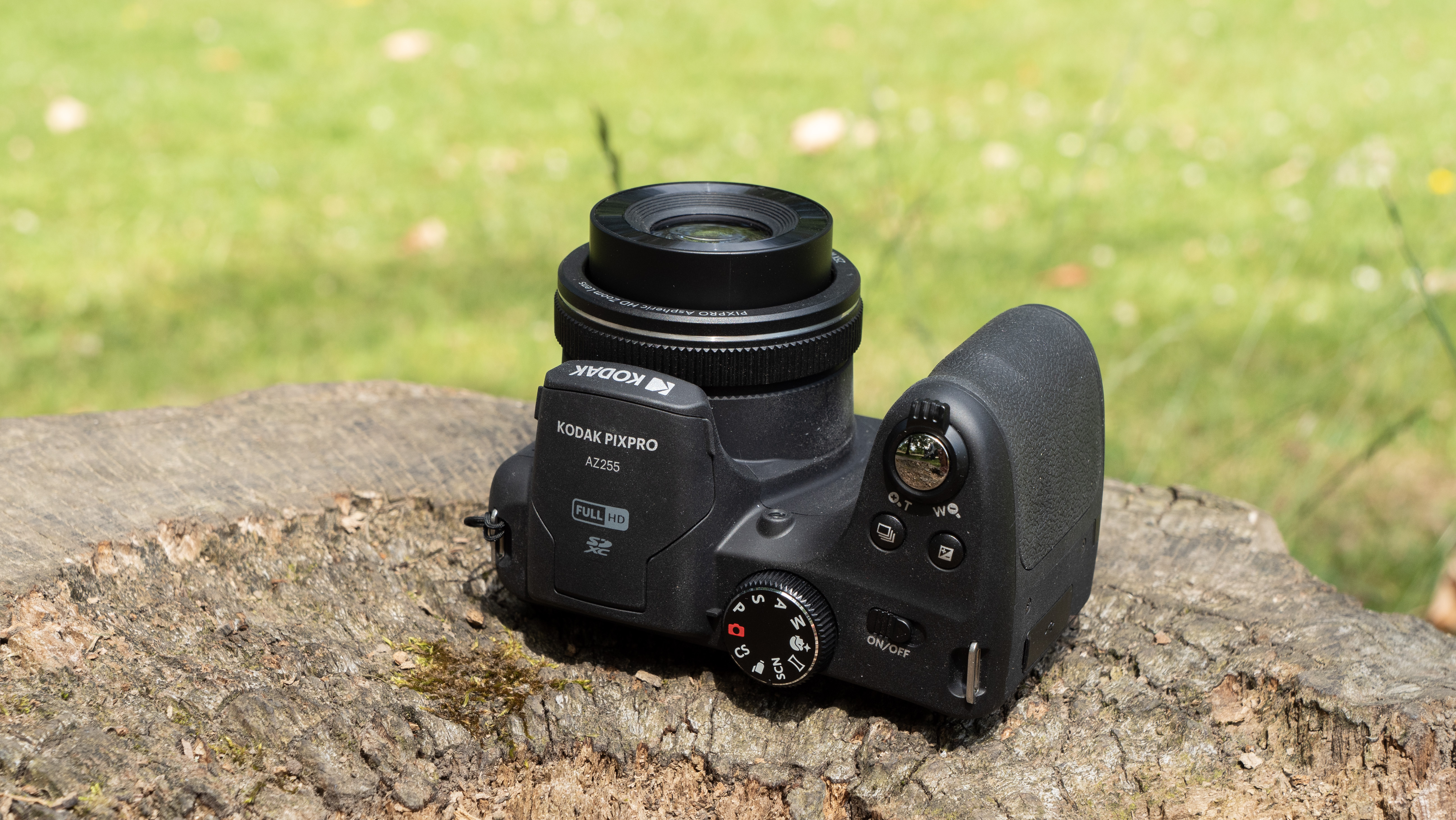
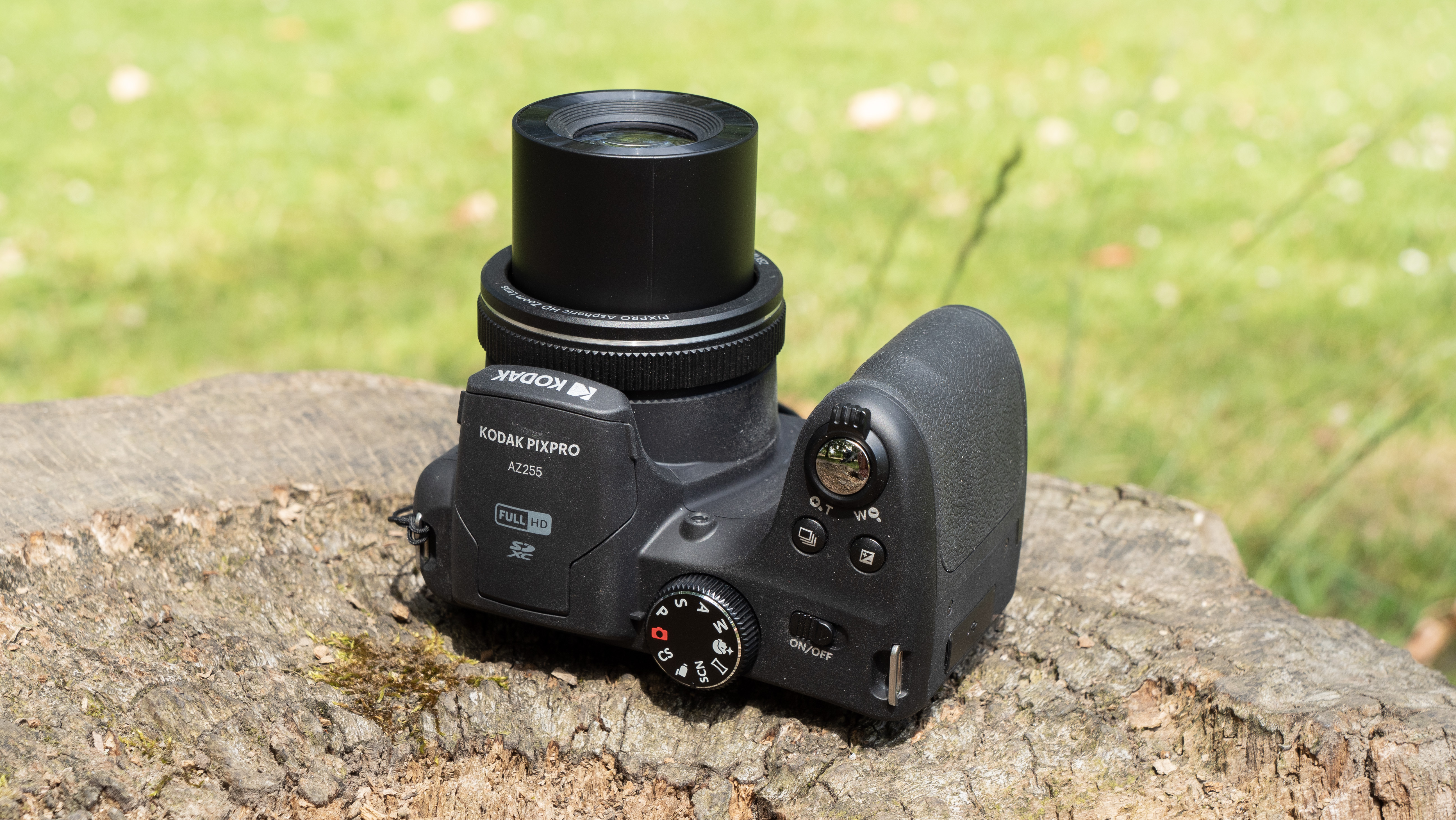
The lens itself has a faux lens ring around it – it’s only there for aesthetic purposes and doesn’t turn or rotate. When fully zoomed, the lens sticks out quite a bit but not so much as to make the camera unbalanced.
On the top of the camera, you’ve got an on/off switch, a drive mode button and an exposure compensation button. The mode dial contains automatic and scene modes, as well as semi-automatic and manual modes, plus room for custom settings and video.
The general operation of the camera is pretty slow, with start-up taking about 2.5-3 seconds before it’s ready to shoot, and even switching between modes you’ll need to wait a second or two.
If you want to use the flash, you’ll need to manually lift it up from the housing on the top of the camera, and snap it back into place when you’re done.
Flip to the back of the camera and you’ve got the screen plus a selection of other operation buttons. All of the buttons are grouped together on the right-hand side, which is a bonus for one-handed shooting. Some notable buttons include the macro button to enable closer focusing, a video record button, and a menu button that takes you to various settings, including metering, HDR, and a deeper menu for things like choosing the quality of changing the date.
Menus are a little bit on the clunky side, and it takes some getting used to find where all the settings are kept. For example, if you wanted to change the aperture in aperture priority or manual mode, you need to press the exposure compensation button, then move between the different options presented and use the up and down arrows to make changes. It’s also worth noting at this point that there are only two apertures selectable at any one given time anyway.
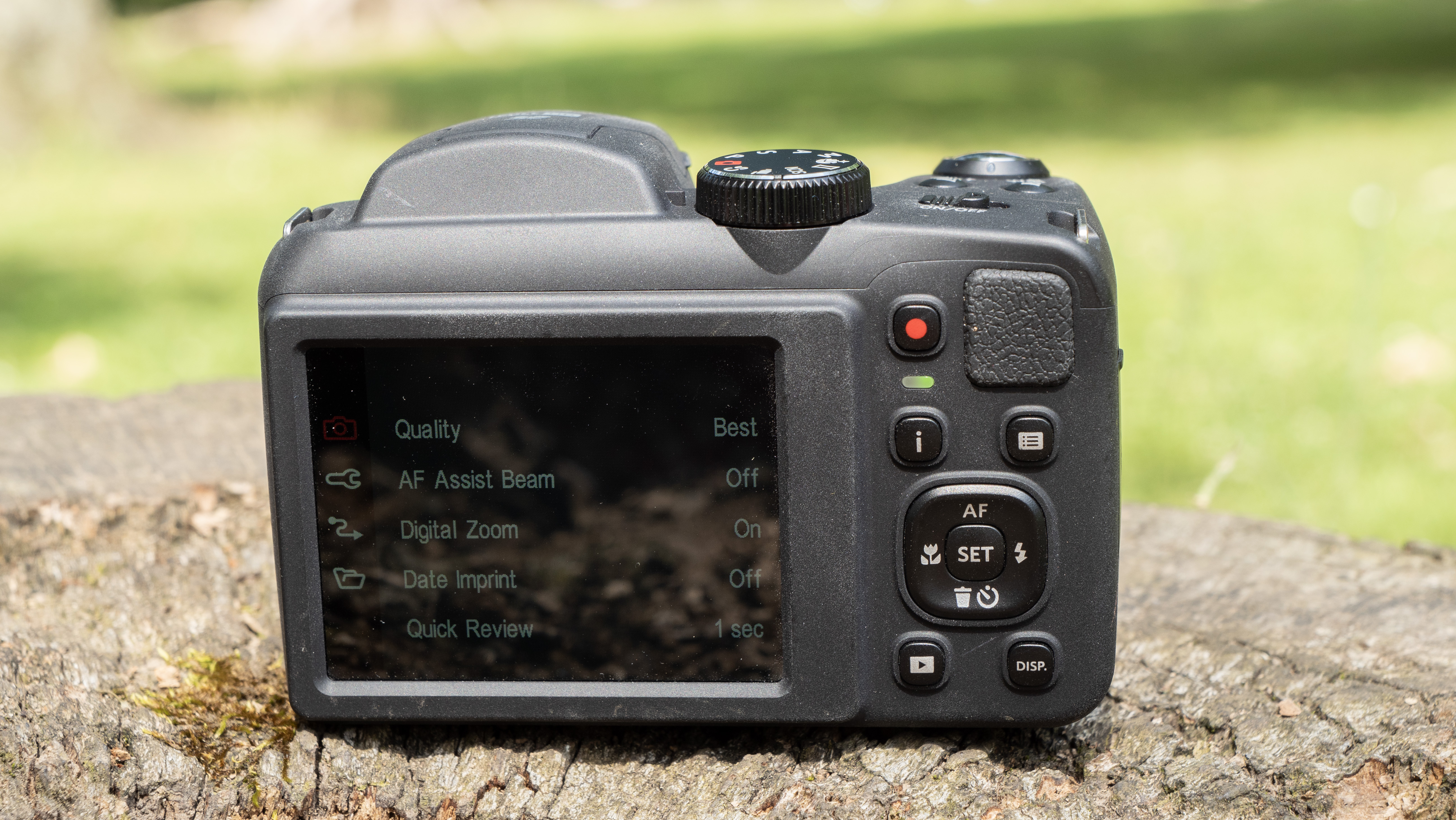
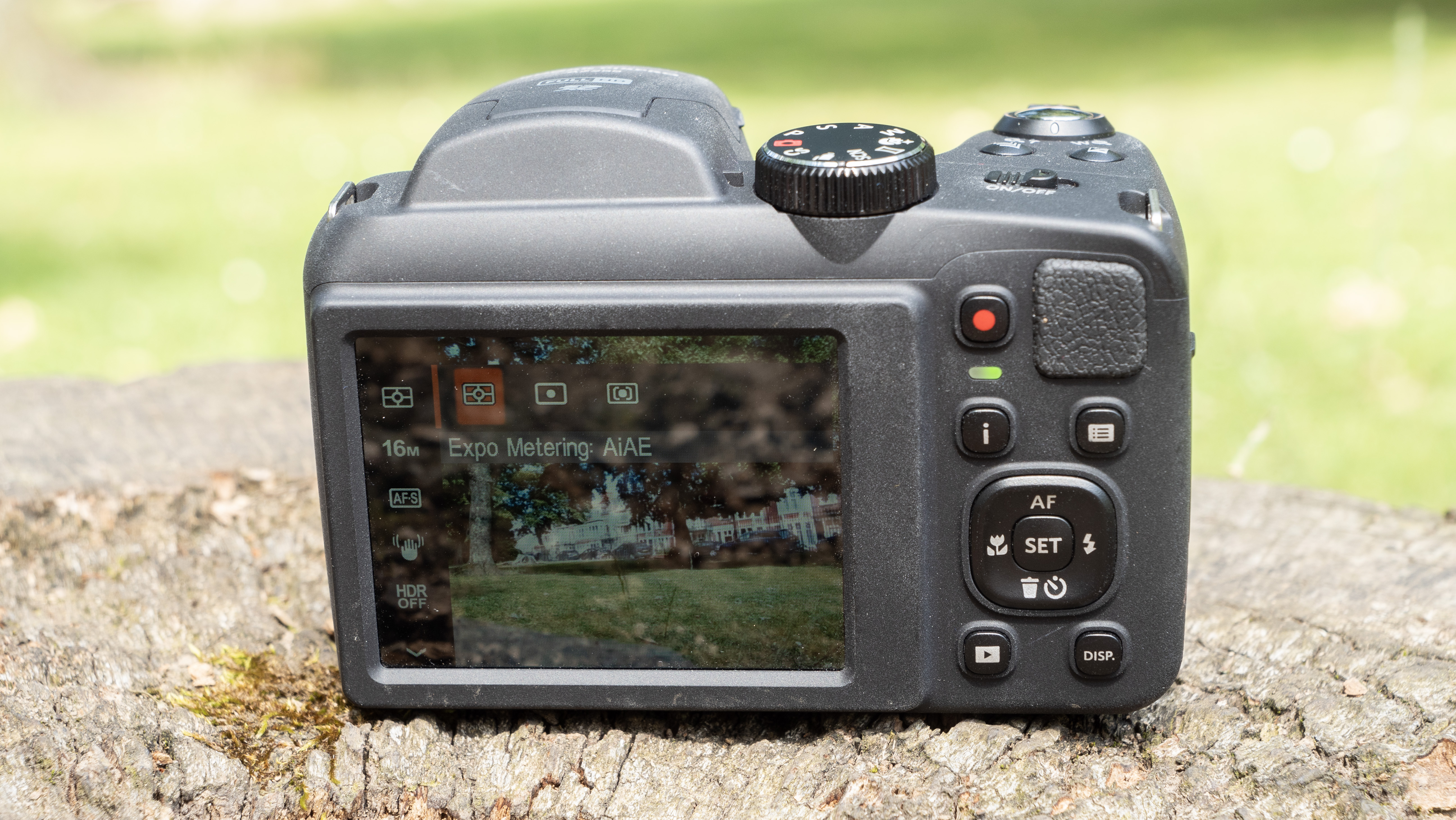
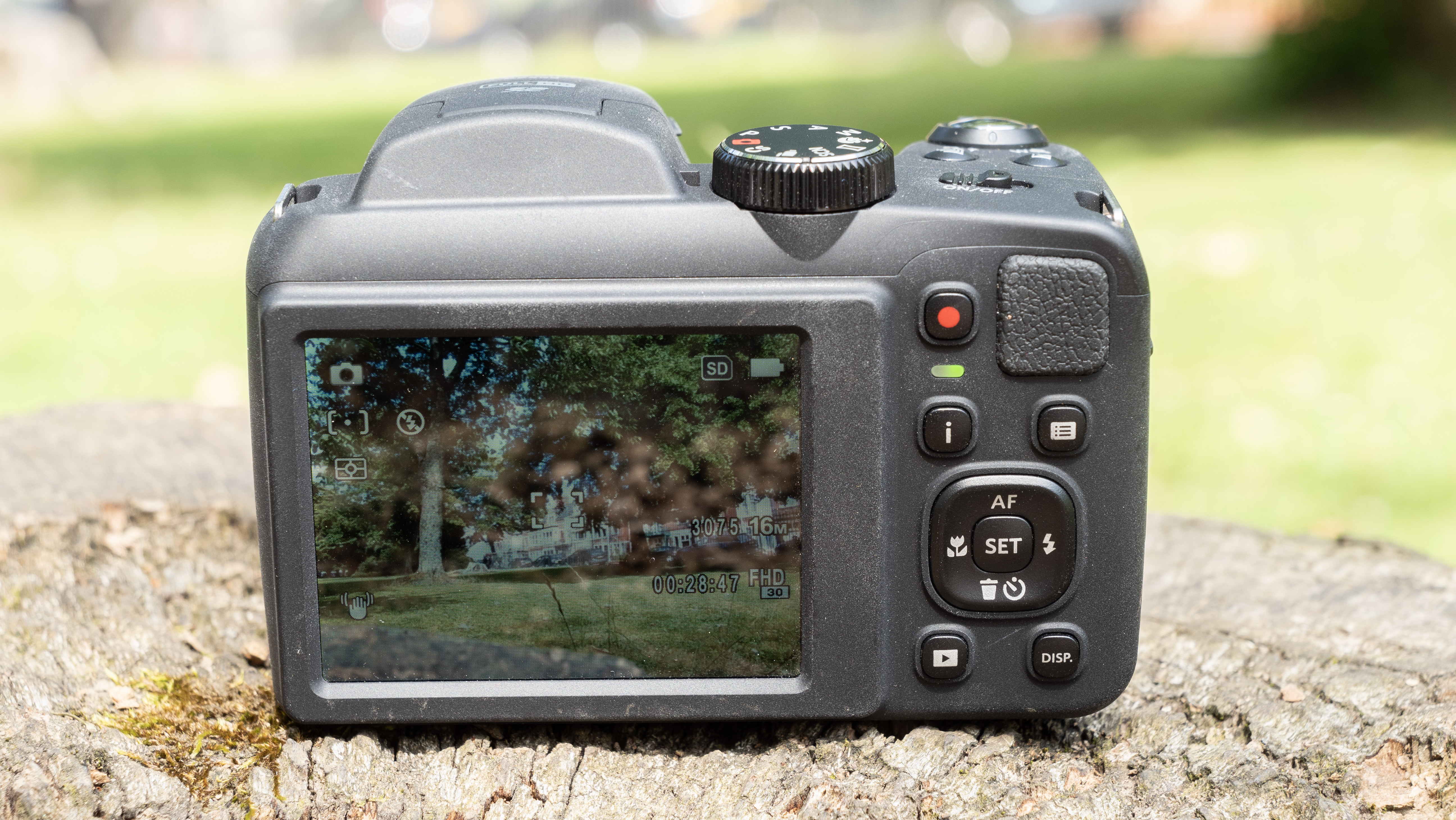
There’s no viewfinder for this camera – which is to be expected at this price point. The screen is a good enough size at 3 inches, and although it’s got a pretty average resolution for the cost, it’s not particularly bright so it can be difficult to view in bright and sunny conditions. On occasion, I essentially had to take a guess at what I was composing.
A quick note about the battery – or batteries in this case. The AZ255 takes 4x AA batteries. The good thing about that is that you can buy them pretty much anywhere, and it’s easy enough to always have spares, but the bad thing is that unless you invest in a rechargeable set, you can end up spending a lot of money. On the plus side, battery life is fairly reasonable – you can certainly expect it to last you at least a couple of days of fairly heavy shooting, probably closer to a week if you’re using it more sparingly.
Kodak PixPro AZ255: Photo Performance
Cameras like this used to be recommended for those looking to upgrade from the quality found on their smartphone. However, in 2024, you’d probably be hard-pressed to find a smartphone that had such poor general image quality as the Kodak AZ255.
When the light is perfect, you can get some pleasing shots. By perfect, I mean bright, but not too bright, and with pleasant conditions (blue skies). Otherwise, if the light is even marginally low, or the sky has a lot of white in it, then you shouldn’t expect high image quality. The lens displays lots of chromatic aberration in high contrast situations, while detail isn’t particularly good for doing anything large with – if you only want to display photos on your phone then it’s not so bad. In even lower light, such as indoors, images lack even more detail and if there’s even the slightest subject movement you’ll be left with a blurry shot. You can turn on the flash, but the results then are on the harsh side.
On the plus side, colors are generally quite good. That is, unless you’re shooting in artificial light and using automatic white balance – then you’ll be left with yellowish tones. You can sort that out by moving to a manual white balance setting though.
Now, I’m talking about general image quality here – so what about the USP of this type of camera? The zoom. Images are still not amazing, with quite a bit of smudginess, but, if you’re patient, hold the camera really still, and mainly shoot static objects, you can get better shots at very long distances than you would do with an average smartphone, most of which would generally only give you only digital zoom beyond 10x. If you need or want to take record shots of distant buildings, for example, then this could be a viable option for you. I was even able to capture some reasonable shots of fairly placid swans and geese in my local park – again good for record shots, but are unlikely to win any awards any time soon.
The reason I reference patience and shooting static subjects is due to the focusing – the camera takes a little while to lock onto focus, so if the subject is moving, even slightly, it can ruin your shot – especially at very long focal lengths. You can choose between a single AF point in the center of the frame, or “multi-AF”, where the camera will decide for you – it doesn’t always get this exactly right, but with a small sensor like this, it’s not generally critical for the focus to be perfectly nailed in the right place. There is a “tracking focus”, but it struggles to keep up with even very, very slow-moving subjects, so I would generally ignore this setting.
Kodak PixPro AZ255: Video Performance
You can record Full HD video with the Kodak AZ255. Again though, you’re almost certainly going to get better results from your smartphone.
Detail is lacking, stabilization is poor and autofocus has a hard time keeping up if you zoom in. If you just want to make quick video clips then it’s fine, but for anything where quality is of the utmost importance, then I’d probably avoid using this camera for video.
Kodak PixPro AZ255: Verdict
In many respects, it’s difficult to recommend a camera like the Kodak PixPro AZ255.
It’s quite frustrating to use, especially if you’ve been used to working with anything better, which as a professional camera reviewer – I am. However, I’d also venture a guess that if you’re new to photography and this is your first “proper” camera it’ll likely frustrate you compared with the ease, speed, and quality of using your smartphone.
Aside from the grippable form factor, there’s not a huge amount going for this camera - there are real buttons, but there are no dials, while some settings can’t really be changed in any meaningful way (such as aperture).
Then there’s image quality. On the whole, the pictures are at best mediocre. If this was a camera from 20 years ago, they might be acceptable, but in today’s climate, where even budget smartphones do a better job, it’s hard to be too impressed here. That said, if you do want a very long zoom for photographing distant subjects, so long as they’re either still or reasonably static, then you can get some half-decent record shots. So, it might be worth it if you have a particular need for that kind of thing.
Of course, there’s the price. At under $/£200, it’s very cheap. Certainly a lot cheaper than most cameras, and cheaper than most smartphones too. If you really want a “real” camera and have very little budget to play with, then it could be worth thinking about. However, I’d generally advocate for spending a little more, saving a bit longer, or perhaps going down the second-hand route to avoid a case of “buy cheap, buy twice”.
| Features | A 25x zoom sounds appealing, but the camera is marred by a small sensor, lack of proper manual controls and only Full HD video. | ★★★☆☆ |
| Design | For the price, you get a fairly chunky and sturdy little camera, with a decent grip. | ★★★☆☆ |
| Performance | Your average smartphone will generally take better pictures than this camera – apart from at long zooms. | ★★☆☆☆ |
| Value | It might be cheap, but you might grow bored of this camera’s performance pretty quickly. | ★★★☆☆ |
✅ Buy it...
- If your budget is super tight but you really want a long zoom bridge camera.
- You want something that looks like a “real” camera far more than your smartphone does.
🚫 Don't buy it...
- If high image quality is your priority – your smartphone will probably take better pictures.
- If you can afford to spend a bit more, do – there are lots of better alternatives out there.
Alternatives
Canon PowerShot SX70 HS
Although this camera is significantly more expensive than the Kodak Pixpro AZ255, you do get a lot more value for money – it takes much better pictures and is less frustrating to use. You might find one for a good price in the second-hand market.
Kodak PixPro AZ528
If you can pay a little bit more, going up Kodak’s range to the AZ528 will see you get slightly better results.
Amy Davies has been writing about photography since 2009, and used to be a colleague on Digital Camera magazine and Techradar.com. She now works as a freelance journalist writing for nclude Amateur Photographer, Stuff, Wired, T3, Digital Photographer, Digital Camera World, TechRadar, Trusted Reviews, ePhotozine and Photography Blog. She has an undergraduate degree in journalism and a postgraduate diploma in magazine journalism, both from Cardiff Journalism School.
